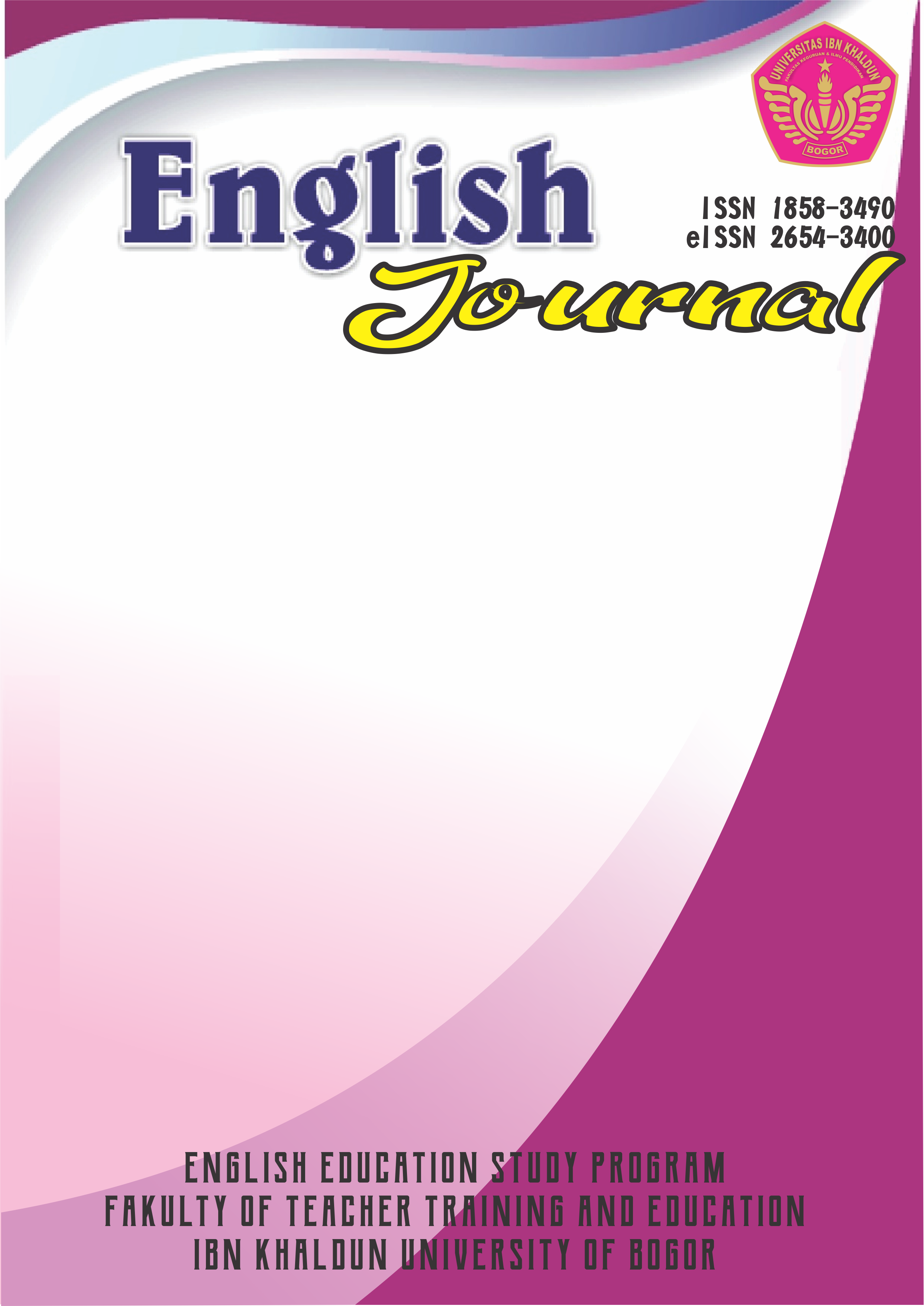STUDENTS' PERCEPTION ON THE USE OF VLOG IN FACILITATING STUDENTS' SPEAKING SKILL IN SOLIHUDDIN SENIOR HIGH SCHOOL, THAILAND
DOI:
https://doi.org/10.32832/english.v13i1.3830Abstrak
This research aimed to find out students' perceptions on the use of vlog in facilitating students' speaking skill in Senior High School in Thailand. In conducting the research, the researcher used qualitative analysis. The researcher uses interview and questionnaire as research instrument. This research took students who understood technology in the Solihuddin School as the participants. Based on the data analysis, the result showed that the students' perception on the use of vlog in facilitating students' speaking skill is good. Students are more creative. They can create vlog in their speaking session. While creating vlog, students can study collaboratively. Students also can speak more confidently and fluently in practicing English speaking. Students are happy in creating a vlog because they are free to speak creatively and innovatively. Vlog can facilitate students in learning English speaking.Referensi
Balbay, S. , & Kilis, S. (2017). Students perception of the use of a youtube channel specifically designed for an academic speaking skills course. Eurasian Journal of Applied Linguistics. Vol 3 (2), pp. 235 - 251.
Brown, H. D. (2001). Teaching by principles : An interactive approach to language pedagogy (2nd ed.). New Jersey: Prentice Hall Inc.
Brown, H. D. (2004). Language assesment principle and classroom practices. New
York: Person Education.
Brown, H. D. (2007). Planning and task performance in a second language.
Amsterdam: John publishing company.
Creswell, J. W. (2012). Educational research (4th ed). Boston: Pearson Education, Inc. El, M. A. (2002). Speaking skill for the students' in definition. Journal University Street America. Vol. 4.
Gay, L. R., Mills, G. E., & Airasian, P. W. (2012). Educational research. New York: PEARSON.
Harmer, J. (2007). Designing and conducting elements of speaking: Thousand oaks. CA: Sage Publications.
Hinkel, E. (2005). Handbook of research in second language teaching and learning.
New York: Routledge.
Jill, H. & Charles, H. (1999). Simple speaking activities. New York: OUP Oxford. Maulidah, I. (2017). Vlog: The mean to improve students speaking ability. Vol. 145, pp. 12-15. The paper is presented in International Conference on English Language Teaching. Gresik: Atlantis Press.
Mokter, Md. H., & Robert, J. Q. (2012). Advantages and disadvantages of using a blogging activity in a college euclidean geometry course. Internasional Journal of Computer Technology and Electronics Enginering (IJCTEE). Vol 2 (6), pp. 1 - 8.
Nation, I. S. P., & Newton, J. (2009). Teaching ESL/EFL listening and speaking. New York: Routledge.
Newton, T. (2009). Speaking in digital storytelling in English speaking skill. Journal for digital storytelling in group of Universal knowledge. Vol. 14(4).
Richard, J. C. (2006). A short analysis of the English of speaking skill: From theory in University group American.
Robbins, S. P., & Judge. T. A. (2010). Organizational Behavior (15th ed.). Canada: Pearson Education.
Sari, P. (2017). Using vlog in the youtube channel as a means to improve students' motivation and confidence to speak english in intermediate 1 level of LB - LIA Jambi. Internasional Journal of English Language and Teaching. Vol 1 (1), pp. 38 - 44.
Wang, Y. (2007). On the cognitive processes of human perception with emotions, motivations, and attitudes. International Journal of Cognitive Infomatics and Natural Intelligence. Vol. 1(4), pp. 1-13.
Wilkinson, D., & Birmingham, P. (2003). Using research instrument: A guide for researchers. London: Routledge Falmer

















1.png)




